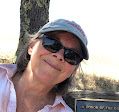“C.G. Jung once described creativity as an instinct. If I do something creative in a day, I can sleep well. I’m relaxed. But if the practical world of traveling and family and obligation prevents me from doing something creative – if I can’t make anything – I feel tired and sick and somewhat depressed.” –Thomas Moore in “Finding Life at Work” in Spirituality and Health, March/April ’08.
I came across this passage recently and it reminds me of what a friend who edits tests for a living once told me: “Writing fiction helps me stand things. If I write an hour in the morning before I come to work, it helps me cope with the rest of the day.”
In The Dynamics of Creation, British psychologist Anthony Storr says that artists create to arrive at a sense of order in a chaotic world, to keep depression at bay, to seek status and prestige, and other psychological reasons. But perhaps the best reason, he concludes, is that some of us are simply blessed (or cursed, depending on how you look at it) with a creative restlessness, or a “divine discontent” that makes us want to create something. This artistic discontent is useful to society because others need art, music, books, etc. for entertainment, comfort, and catharsis.
What a perfect equation: some needing to create, others needing the catharsis of the creation. If we’re resisting our own creative restlessness, maybe we should stop fighting within ourselves and do what we are programmed to do?



